Environment Friendly Energy Cooperation in Neighboring Buildings: A Transformed Linearization Approach
Abstract
:1. Introduction
- A mathematical model for energy cooperation among neighboring buildings equipped with various configurations of RES is developed. The intention is to fulfill the domestic electricity, heating and cooling needs. The framework is flexible, and can be customized with the users’ needs with aim of minimizing operational costs.
- Considering solar irradiance and wind speed data of Islamabad, PV arrays and wind turbines (WT) are modeled. The simulation results, based on realistic harvesting models, represents electricity, heating and cooling cooperation among buildings.
- For energy cooperation, a constrained nonlinear mathematical model is presented. McCormick envelopes are employed to linearize the problem, which is then solved using the interior point method.
2. Methods
2.1. Modeling of Wind Energy
2.2. Modeling of Solar Energy
2.3. Problem Statement and Linear Transformation
- The total number of neighboring buildings;
- One day electricity, heating and cooling generation profile of each building;
- One day electricity, heating and cooling load profile of each building;
- The total electricity, heating and cooling cost of each building;
- The electricity, heating and cooling deficiency at each building;
- The surplus electricity, heating and cooling at each buildings;
- The amount of electricity, heating and cooling shared between any two buildings;
- The total cost savings as a result of electricity, heating and cooling cooperation.
3. Results and Discussion
Comparison between of Cooperation and Non Cooperation Model
4. Conclusions and Future Work
Author Contributions
Funding
Institutional Review Board Statement
Informed Consent Statement
Data Availability Statement
Conflicts of Interest
Nomenclature
| Abbreviations & Notations | Description |
| N | number of neighboring buildings |
| AWT | area swept by wind turbine blades |
| v | wind speed |
| Cp | efficiency coefficient of wind turbine |
| air density | |
| k | shape parameter |
| solar yield | |
| A | photovoltaic panel area |
| I | solar insolation |
| t | time interval |
| T | time horizon |
| cost of energy generated through RES | |
| cost of energy generated through utility | |
| electricity generated through RES at interval t | |
| electricity purchased from the utility at interval t | |
| electricity sold back to the utility at interval t | |
| electricity transfer from building m to building n at interval t | |
| electricity transfer from building n to building m at interval t | |
| heat generated through some fossil fuels at interval t | |
| heat transfer from building m to building n at interval t | |
| electricity transfer from building n to building m at interval t | |
| cooling generated through some cooling process at interval t | |
| cooling transfer from building m to building n at interval t | |
| cooling transfer from building n to building m at interval t | |
| cost of the specified energy term | |
| electricity load | |
| heating load | |
| cooling load | |
| minimum electricity transfer from building m to building n | |
| maximum electricity transfer from building m to building n | |
| CE | electricity convex envelope coefficient |
| minimum heat transfer from building m to building n | |
| maximum heat transfer from building m to building n | |
| HE | heating convex envelope coefficient |
| minimum heat transfer from building m to building n | |
| maximum heat transfer from building m to building n | |
| QE | cooling convex envelope coefficient |
| heat loss at interval t | |
| cooling loss at interval t | |
| BTU | British thermal unit |
| CCHP | combined heating, cooling and power |
| CHP | combined heating and power |
| GHG | greenhouse gases |
| MILP | mix integer linear programming |
| NG | natural gas |
| PV | photovoltaic |
| RES | renewable energy sources |
| WT | wind turbine |
| WPD | Weibull probability distribution |
References
- Moussa, R.R.; Mahmoud, A.H.; Hatem, T.M. A digital tool for integrating renewable energy devices within landscape elements: Energy-scape online application. J. Clean. Prod. 2020, 254, 119932. [Google Scholar] [CrossRef]
- International Energy Agency. Global Energy and CO2 Status Report: The Latest Trends in Energy and Emissions in 2018. 2018, pp. 1–29. Available online: https://iea.blob.core.windows.net/assets/23f9eb39-7493-4722-aced-61433cbffe10/Global_Energy_and_CO2_Status_Report_2018.pdf (accessed on 1 December 2021).
- International Energy Agency. World Energy Outlook 2020. 2020, pp. 1–464. Available online: https://iea.blob.core.windows.net/assets/a72d8abf-de08-4385-8711-b8a062d6124a/WEO2020.pdf (accessed on 1 December 2021).
- Schwarz, M.; Nakhle, C.; Knoeri, C. Innovative designs of building energy codes for building decarbonization and their implementation challenges. J. Clean. Prod. 2020, 248, 119260. [Google Scholar] [CrossRef]
- Du, Y.; Blocken, B.; Pirker, S. A novel approach to simulate pollutant dispersion in the built environment: Transport-based recurrence CFD. Build. Environ. 2020, 170, 1–13. [Google Scholar] [CrossRef]
- Trust management and evaluation for edge intelligence in the Internet of Things. Eng. Appl. Artif. Intell. 2020, 94, 6. [CrossRef]
- Hosking, J.S.; MacLeod, D.; Phillips, T.; Holmes, C.R.; Watson, P.; Shuckburgh, E.F.; Mitchell, D. Changes in European wind energy generation potential within a 1.5 ∘C warmer world. Environ. Res. Lett. 2018, 13, 054032. [Google Scholar]
- Amber, K.P.; Aslam, M.W.; Ikram, F.; Kousar, A.; Ali, H.M.; Akram, N.; Afzal, K.; Mushtaq, H. Heating and cooling degree-days maps of Pakistan. Energies 2018, 11, 94. [Google Scholar] [CrossRef] [Green Version]
- Diakaki, C.; Grigoroudis, E.; Kabelis, N.; Kolokotsa, D.; Kalaitzakis, K.; Stavrakakis, G. A multi-objective decision model for the improvement of energy efficiency in buildings. Energy 2010, 35, 5483–5496. [Google Scholar] [CrossRef]
- Gustavsson, L.; Joelsson, A. Life cycle primary energy analysis of residential buildings. Energy Build. 2010, 42, 210–220. [Google Scholar] [CrossRef]
- Andrychowicz, M. The impact of energy storage along with the allocation of RES on the reduction of energy costs using MILP. Energies 2021, 14, 3783. [Google Scholar] [CrossRef]
- Ahsan, S.M.; Khan, H.A.; ul Hassan, N.; Arif, S.M.; Lie, T.T. Optimized power dispatch for solar photovoltaic-storage system with multiple buildings in bilateral contracts. Appl. Energy 2020, 273, 273. [Google Scholar] [CrossRef]
- Hussain, A.; Bui, V.H.; Kim, H.M.; Im, Y.H.; Lee, J.Y. Optimal energy management of combined cooling, heat and power in different demand type buildings considering seasonal demand variations. Energies 2017, 10, 789. [Google Scholar] [CrossRef] [Green Version]
- Analysis of a hybrid solar-assisted trigeneration system. Energies 2016, 9, 705. [CrossRef] [Green Version]
- Bellos, E.; Tzivanidis, C. Optimization of a solar-driven trigeneration system with nanofluid-based parabolic trough collectors. Energies 2017, 10, 848. [Google Scholar] [CrossRef] [Green Version]
- Acevedo, L.; Uche, J.; Del Almo, A.; Círez, F.; Usón, S.; Martínez, A.; Guedea, I. Dynamic simulation of a trigeneration scheme for domestic purposes based on hybrid techniques. Energies 2016, 9, 12. [Google Scholar] [CrossRef] [Green Version]
- Bracco, S.; Dentici, G.; Siri, S. Economic and environmental optimization model for the design and the operation of a combined heat and power distributed generation system in an urban area. Energy 2013, 55, 1014–1024. [Google Scholar] [CrossRef]
- Bahmani, R.; Karimi, H.; Jadid, S. Cooperative energy management of multi-energy hub systems considering demand response programs and ice storage. Int. J. Electr. Power Energy Syst. 2021, 130, 106904. [Google Scholar] [CrossRef]
- Waqar, A.; Shahbaz Tanveer, M.; Ahmad, J.; Aamir, M.; Yaqoob, M.; Anwar, F. Multi-objective analysis of a CHP plant integrated microgrid in Pakistan. Energies 2017, 10, 1625. [Google Scholar] [CrossRef] [Green Version]
- Nema, P.; Rangnekar, S.; Nema, R. Pre-feasibility study of PV-solar/wind hybrid energy system for GSM type mobile telephony base station in central India. In Proceedings of the 2010 The 2nd International Conference on Computer and Automation Engineering (ICCAE), Singapore, 26–28 February 2010; Volume 5, pp. 152–156. [Google Scholar]
- World Weather Online. Available online: https://www.worldweatheronline.com/islamabad-weather-averages/islamabad/pk.aspx (accessed on 1 December 2021).
- Theo, W.L.; Lim, J.S.; Ho, W.S.; Hashim, H.; Lee, C.T. Review of distributed generation (DG) system planning and optimisation techniques: Comparison of numerical and mathematical modelling methods. Renew. Sustain. Energy Rev. 2017, 67, 531–573. [Google Scholar] [CrossRef]
- Solar Electricity Handbook. Available online: www.solarelectricityhandbook.com/solar-irradiance.html (accessed on 4 November 2021).
- Mitsos, A.; Chachuat, B.; Barton, P.I. McCormick-based relaxations of algorithms. SIAM J. Optim. 2009, 20, 573–601. [Google Scholar] [CrossRef]
- Boyd, S.; Boyd, S.P.; Vandenberghe, L. Convex Optimization; Cambridge University Press: Cambridge, UK, 2004. [Google Scholar] [CrossRef]
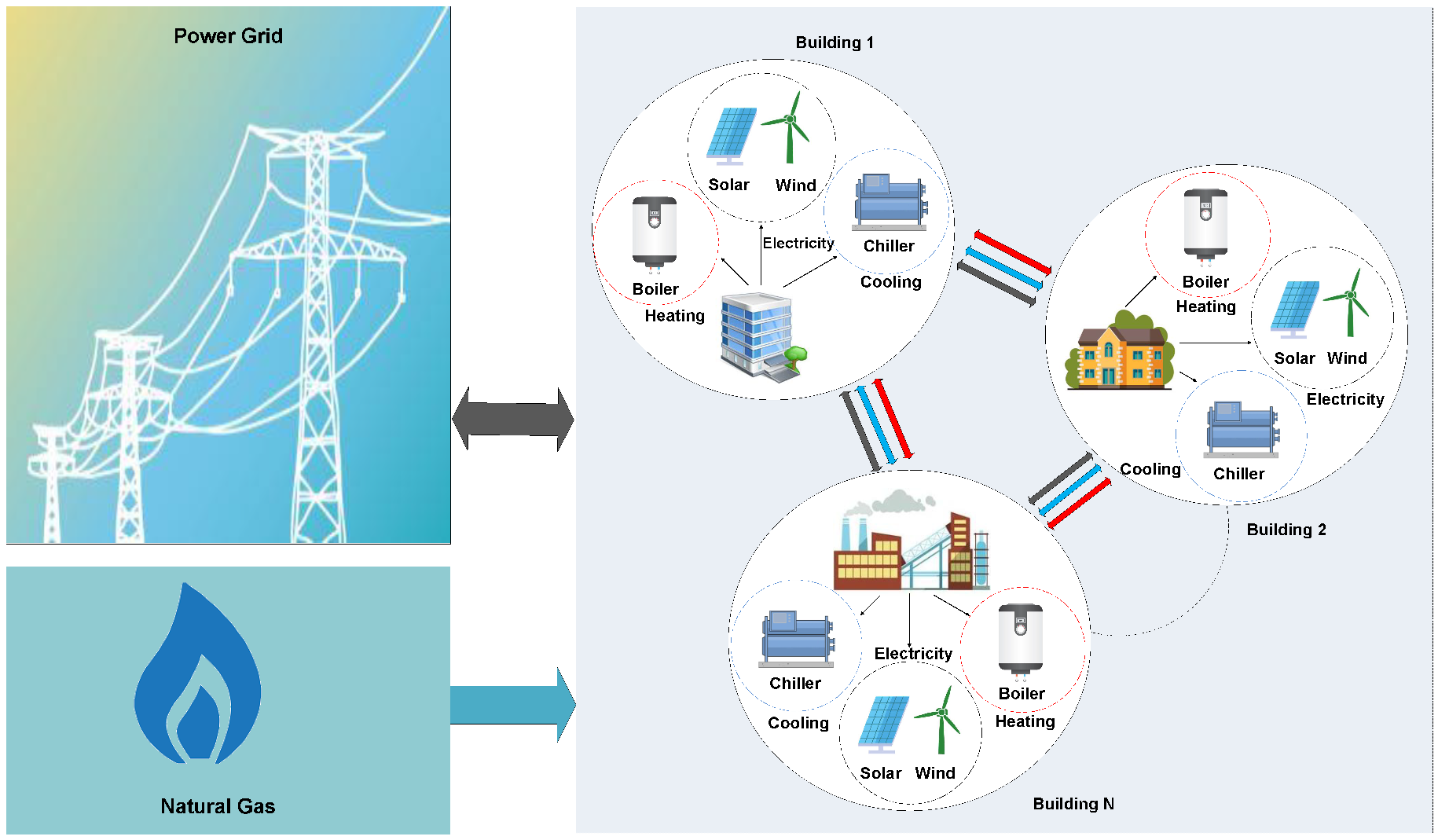
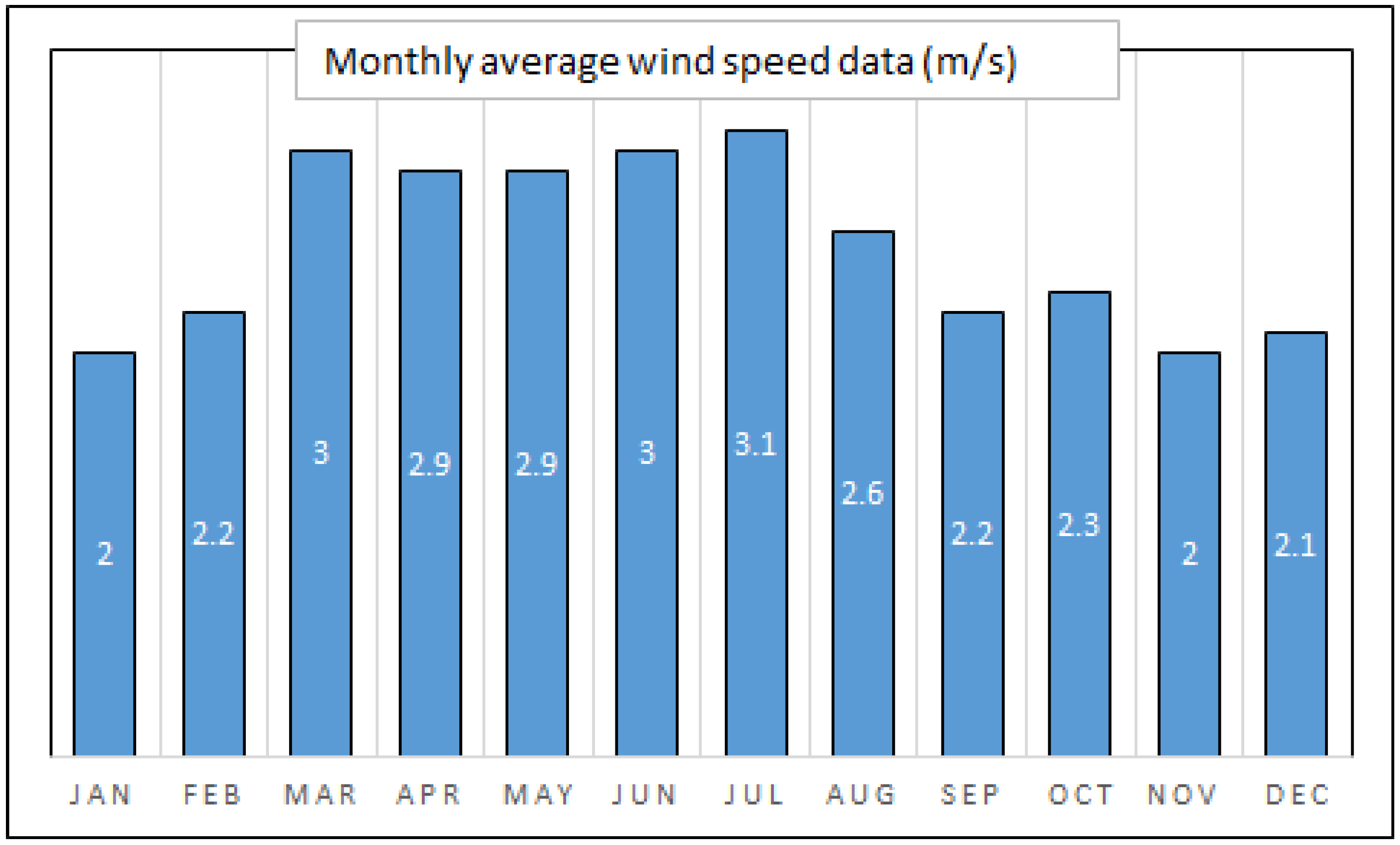
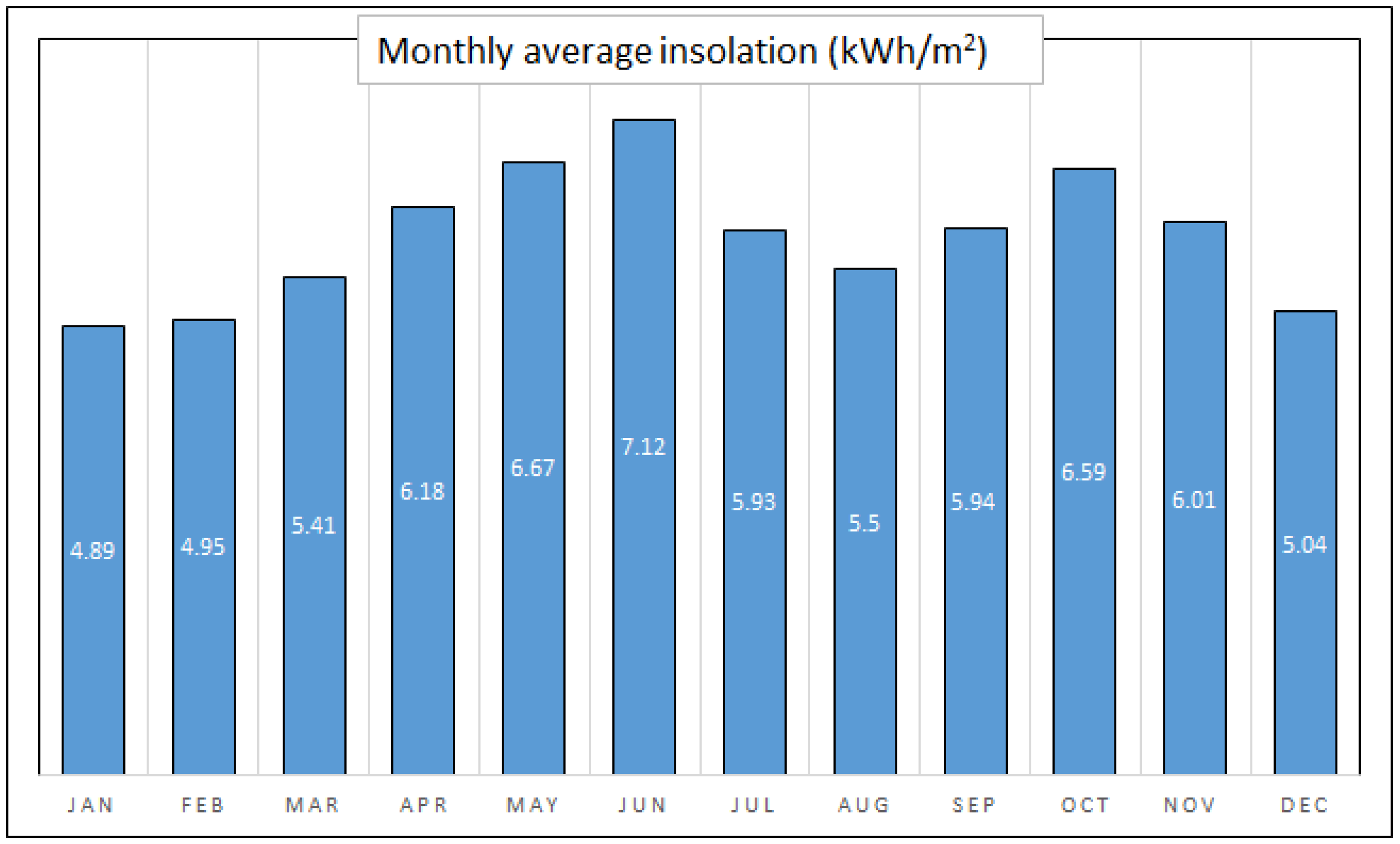
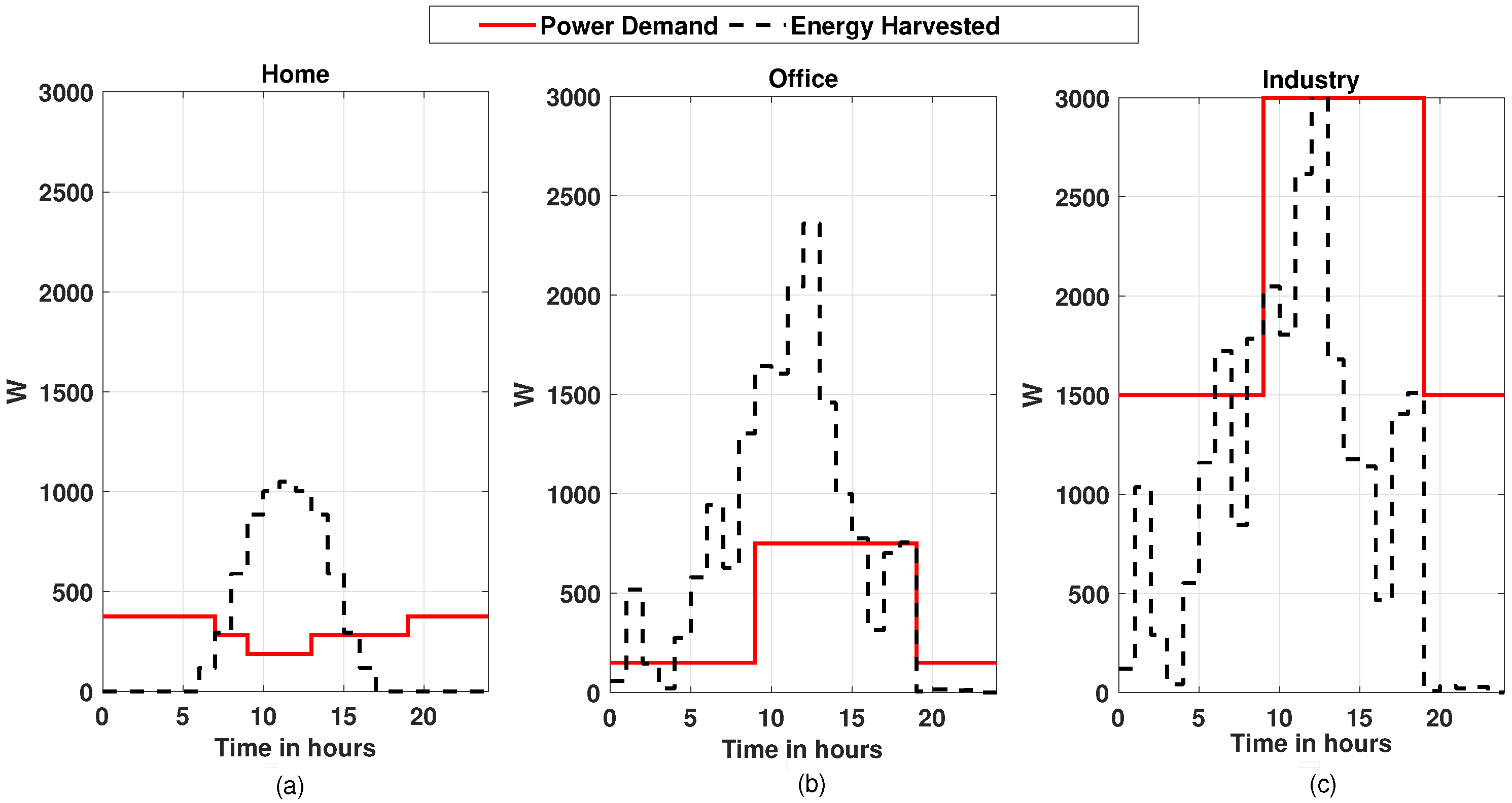
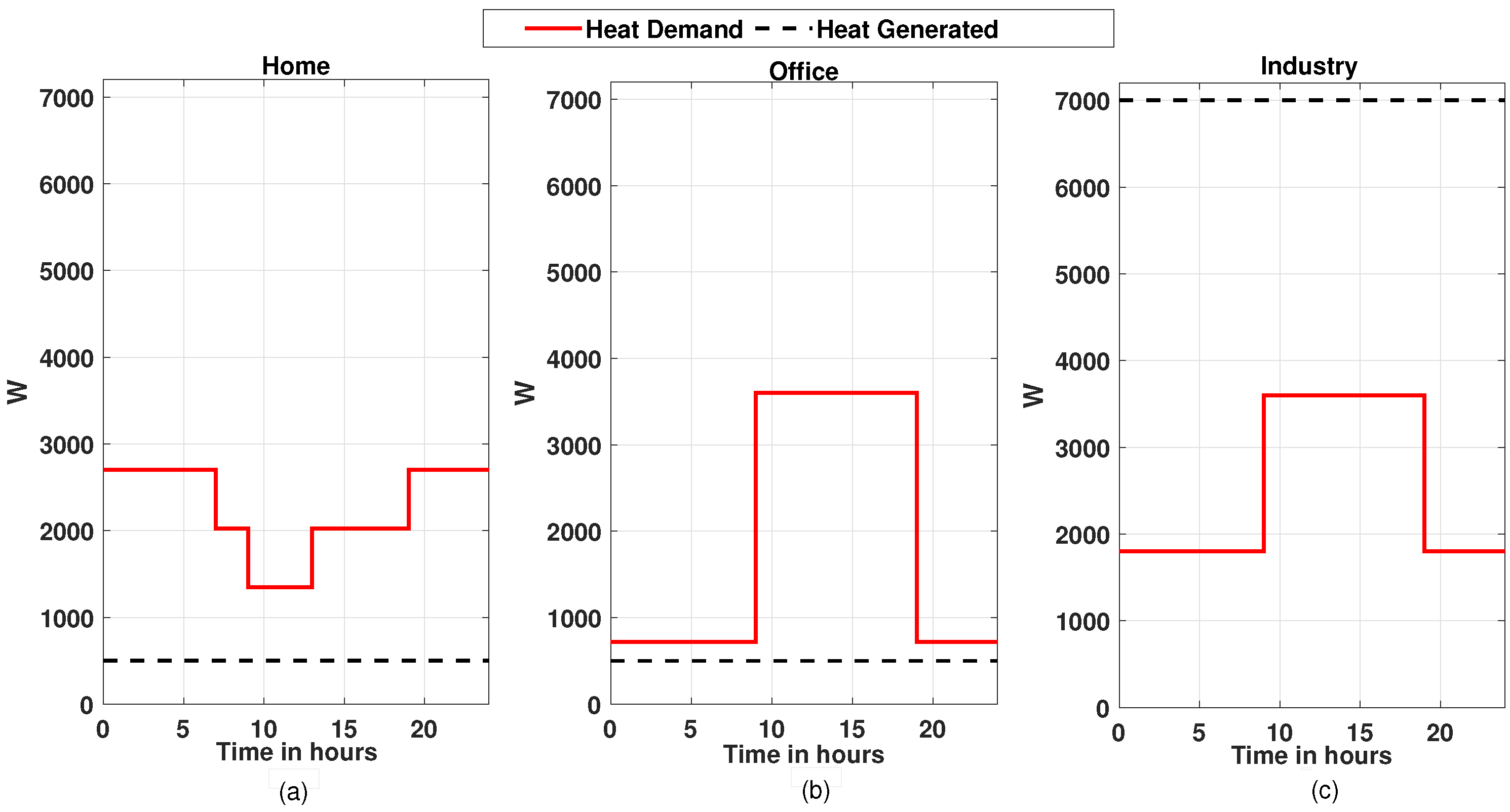

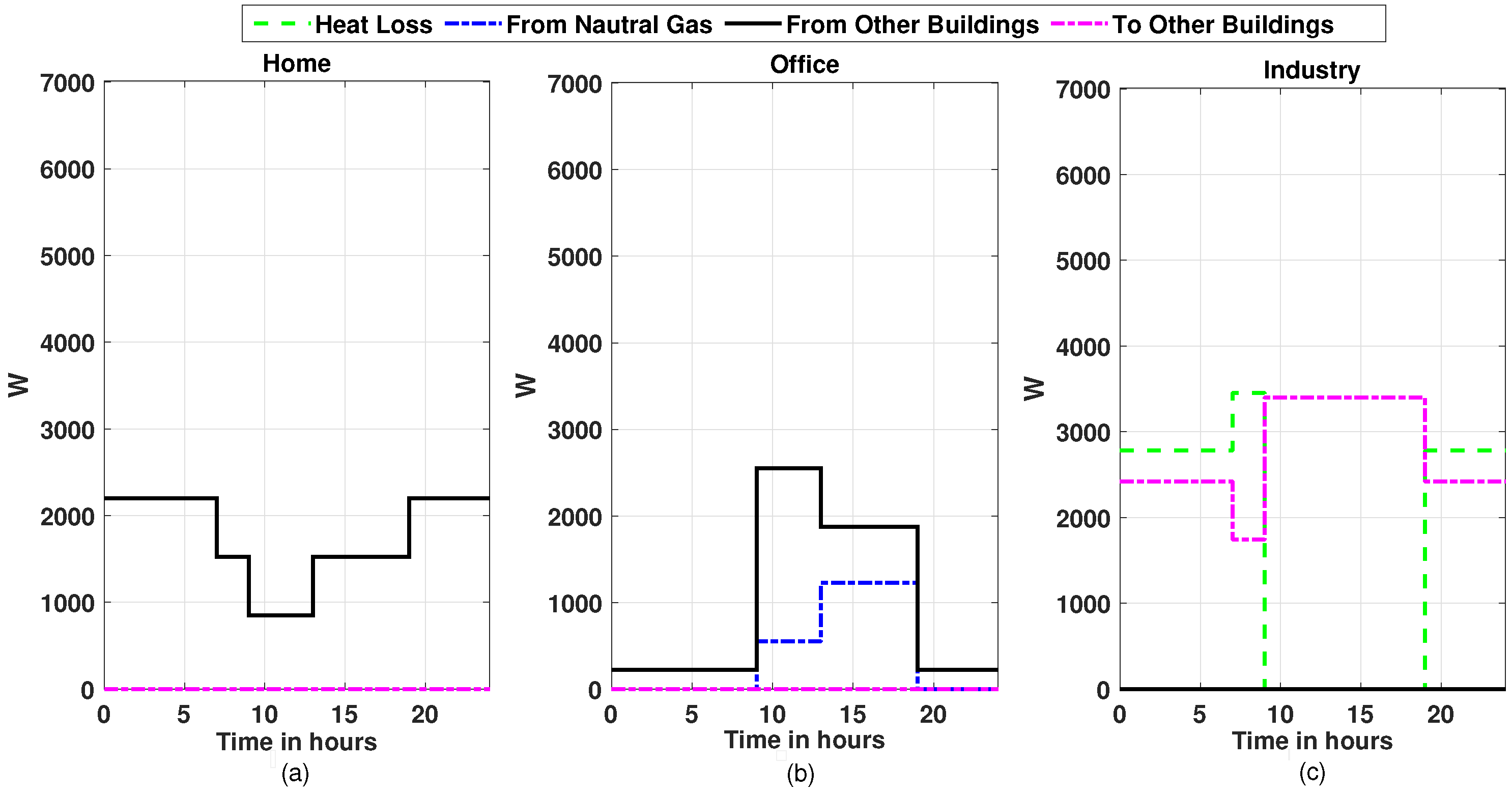
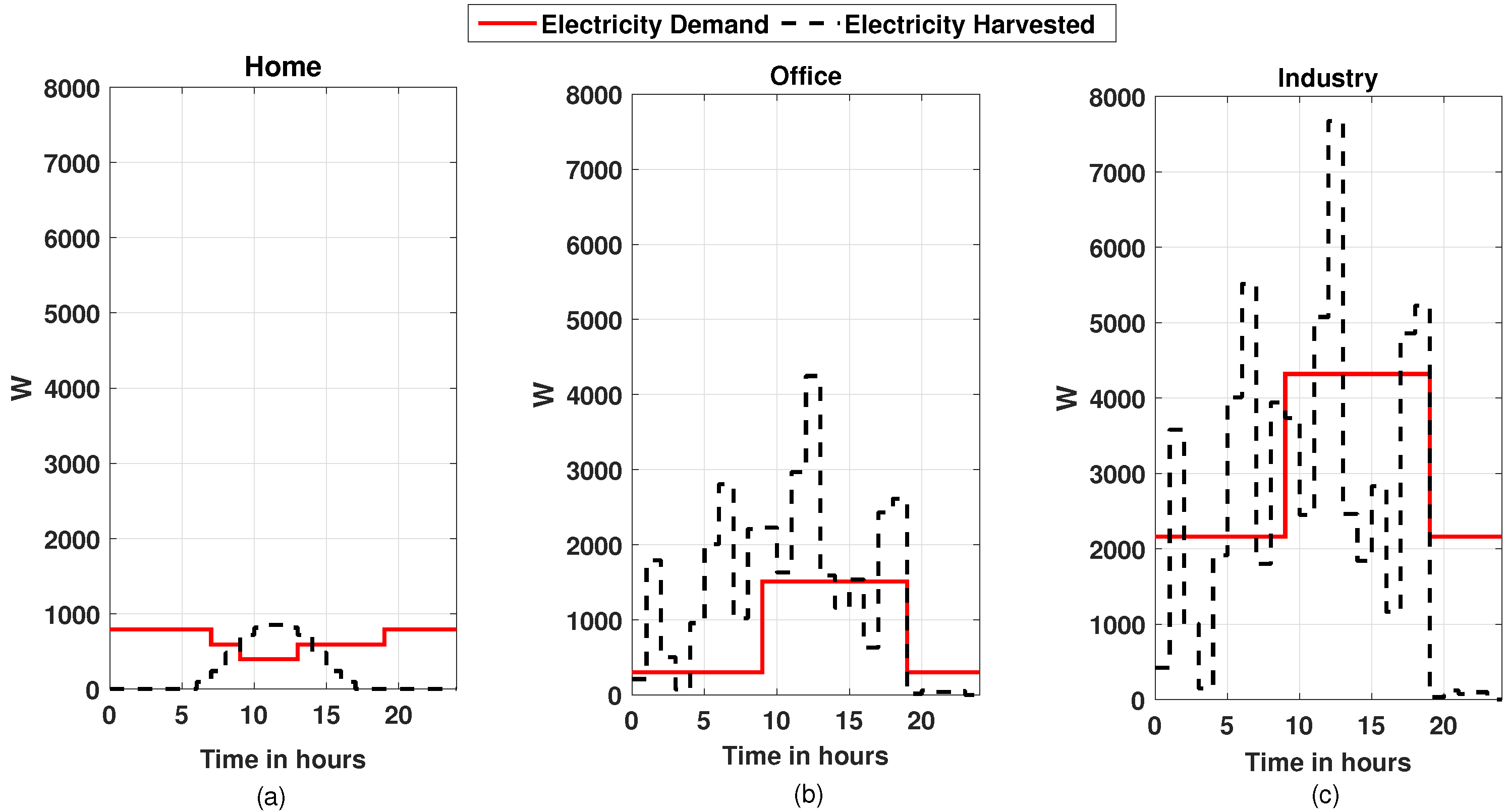
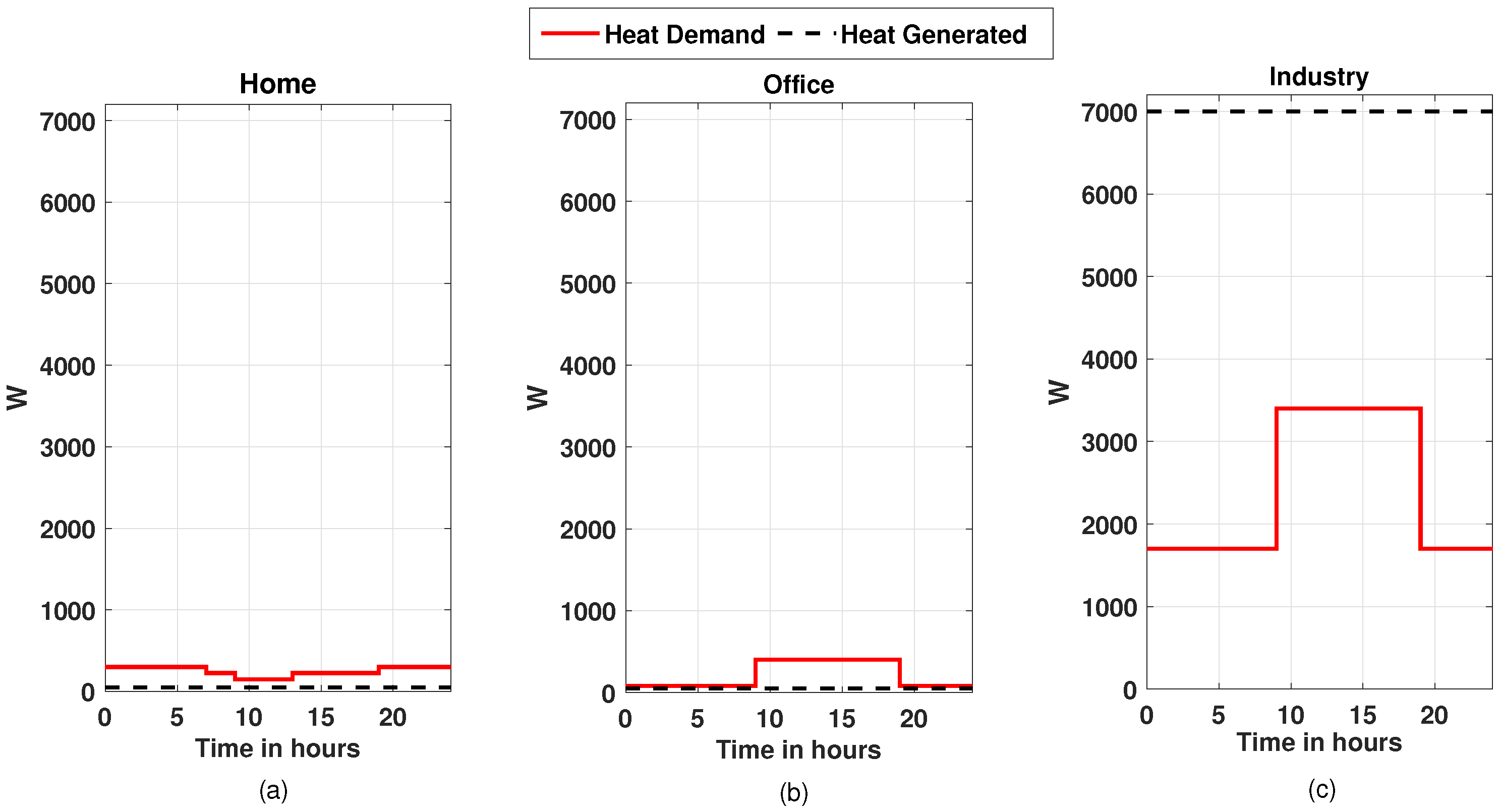
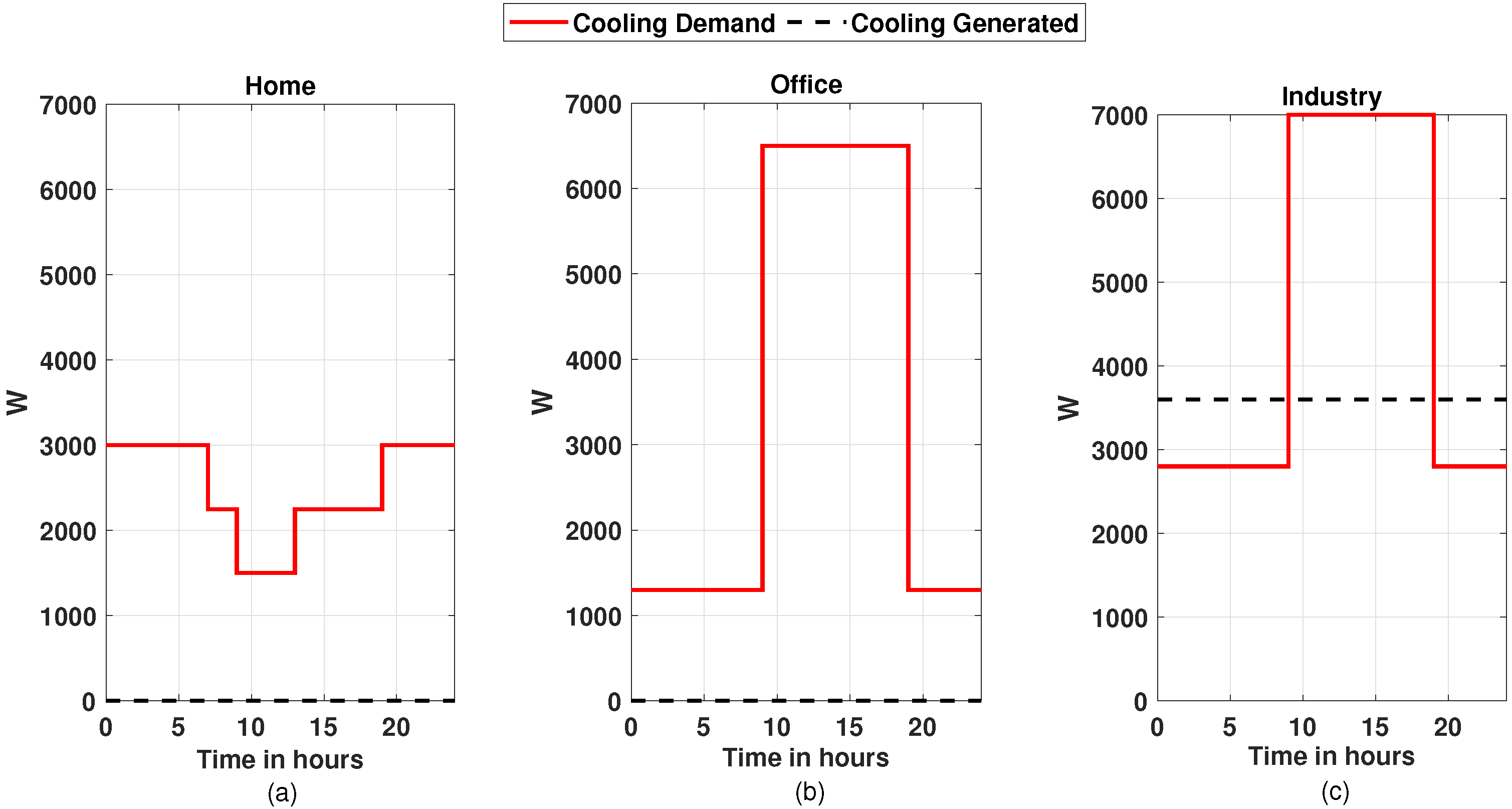

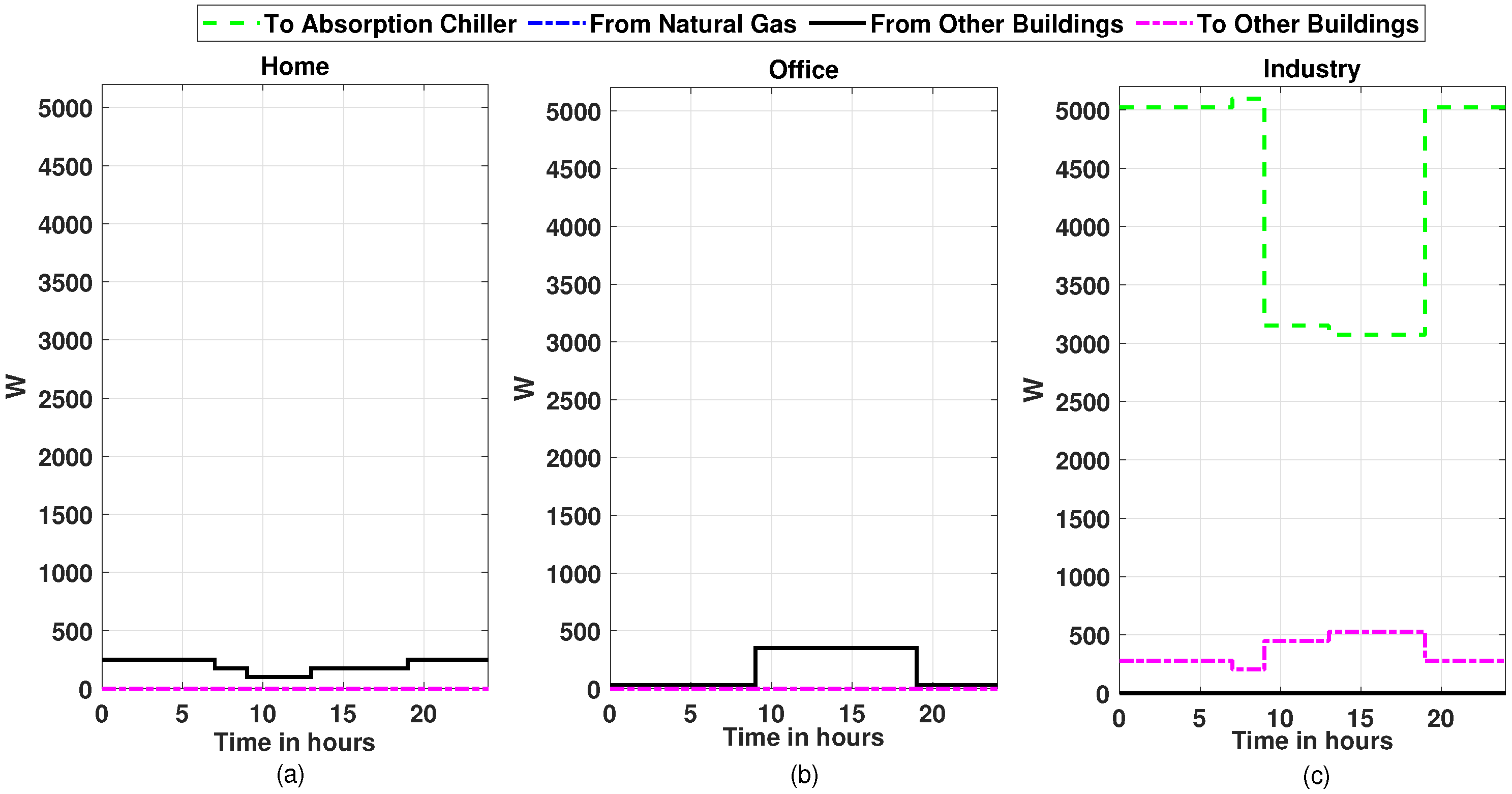
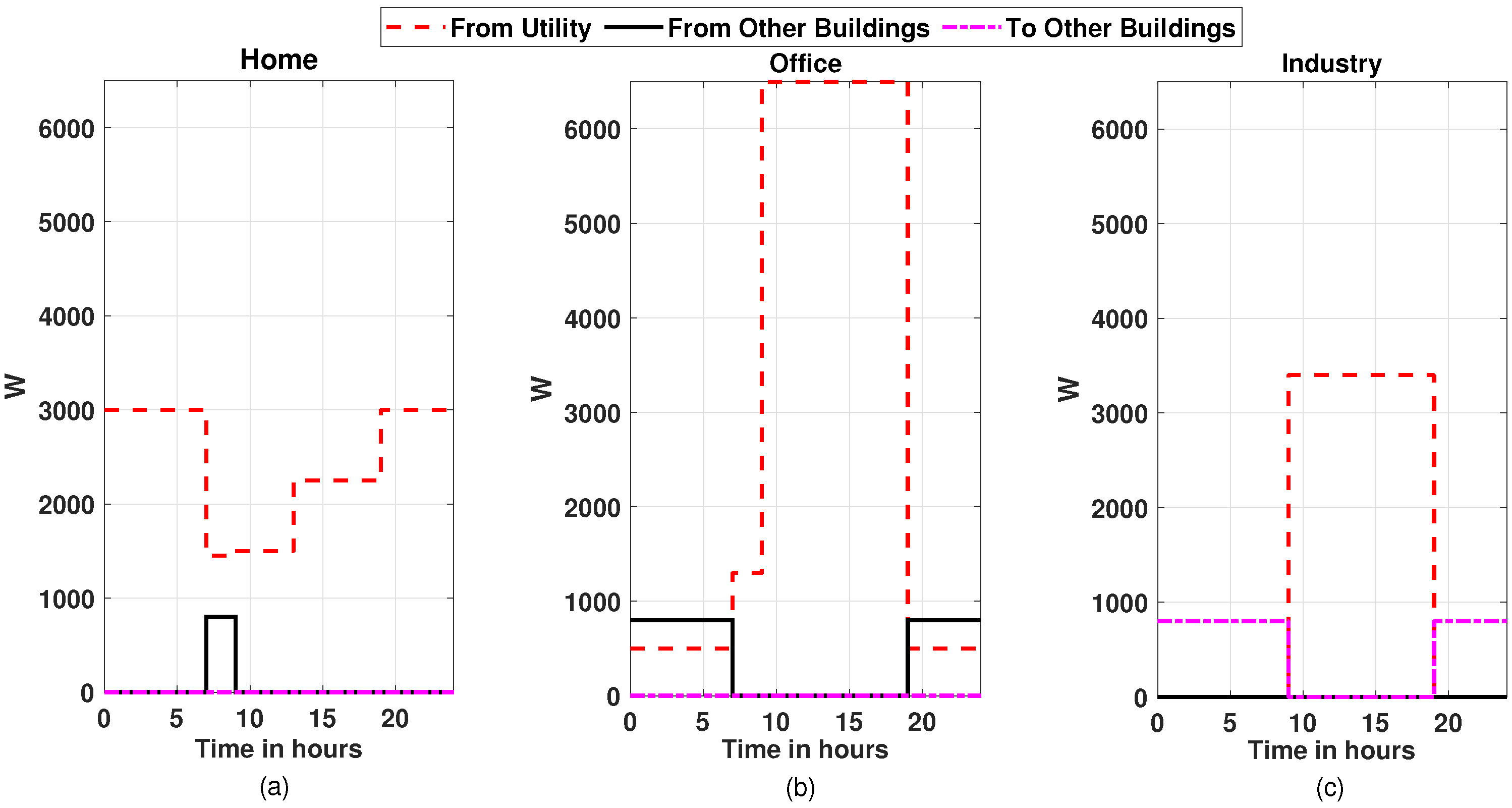
Publisher’s Note: MDPI stays neutral with regard to jurisdictional claims in published maps and institutional affiliations. |
© 2022 by the authors. Licensee MDPI, Basel, Switzerland. This article is an open access article distributed under the terms and conditions of the Creative Commons Attribution (CC BY) license (https://creativecommons.org/licenses/by/4.0/).
Share and Cite
Ur Rehman, H.; Haider, S.A.; Naqvi, S.R.; Naeem, M.; Kwak, K.-S.; Islam, S.M.R. Environment Friendly Energy Cooperation in Neighboring Buildings: A Transformed Linearization Approach. Energies 2022, 15, 1160. https://doi.org/10.3390/en15031160
Ur Rehman H, Haider SA, Naqvi SR, Naeem M, Kwak K-S, Islam SMR. Environment Friendly Energy Cooperation in Neighboring Buildings: A Transformed Linearization Approach. Energies. 2022; 15(3):1160. https://doi.org/10.3390/en15031160
Chicago/Turabian StyleUr Rehman, Habib, Sajjad Ali Haider, Syed Rameez Naqvi, Muhammad Naeem, Kyung-Sup Kwak, and S. M. Riazul Islam. 2022. "Environment Friendly Energy Cooperation in Neighboring Buildings: A Transformed Linearization Approach" Energies 15, no. 3: 1160. https://doi.org/10.3390/en15031160
APA StyleUr Rehman, H., Haider, S. A., Naqvi, S. R., Naeem, M., Kwak, K.-S., & Islam, S. M. R. (2022). Environment Friendly Energy Cooperation in Neighboring Buildings: A Transformed Linearization Approach. Energies, 15(3), 1160. https://doi.org/10.3390/en15031160






